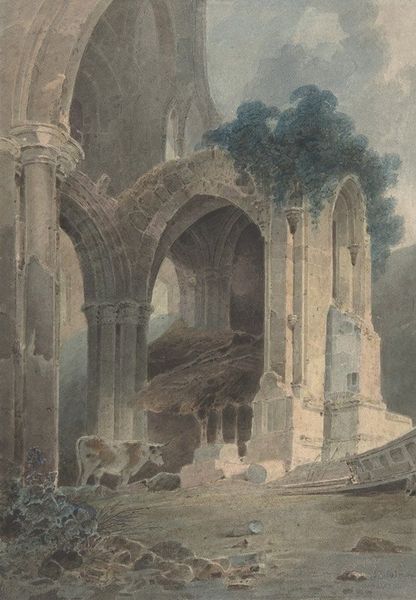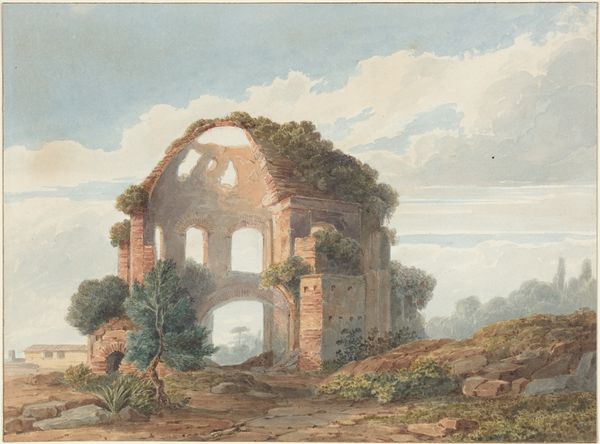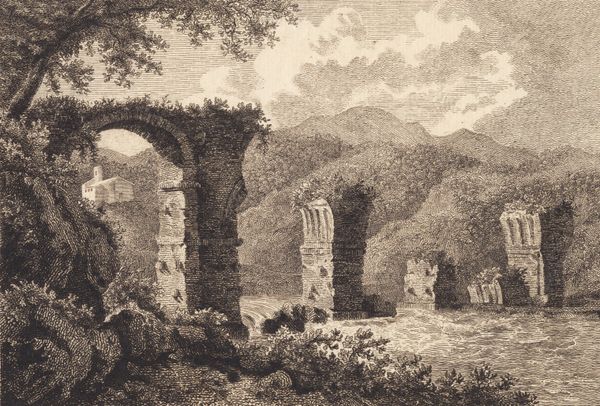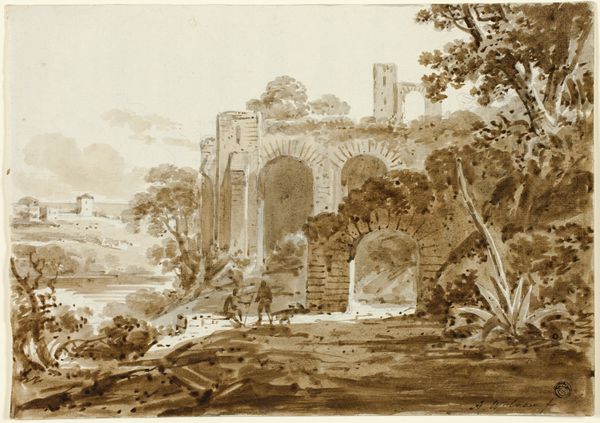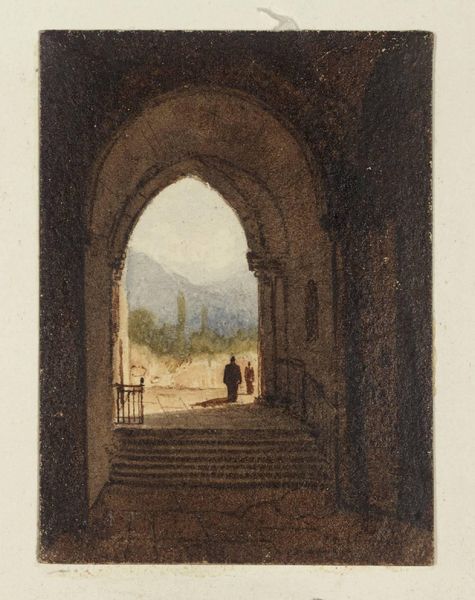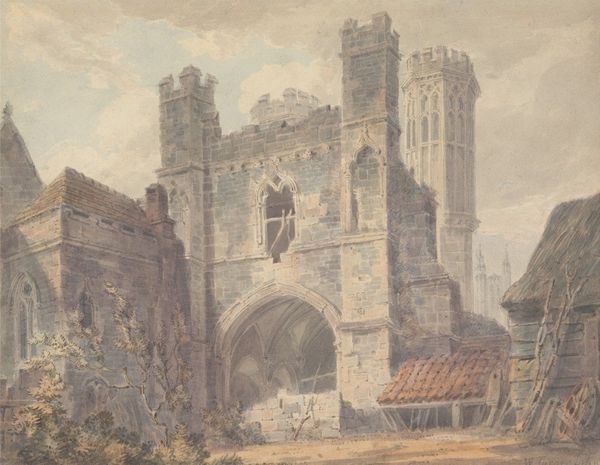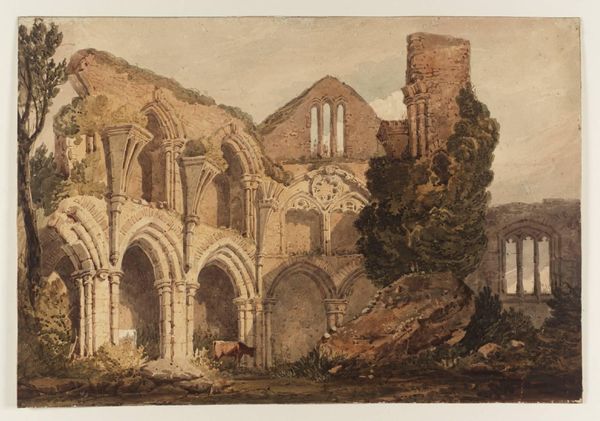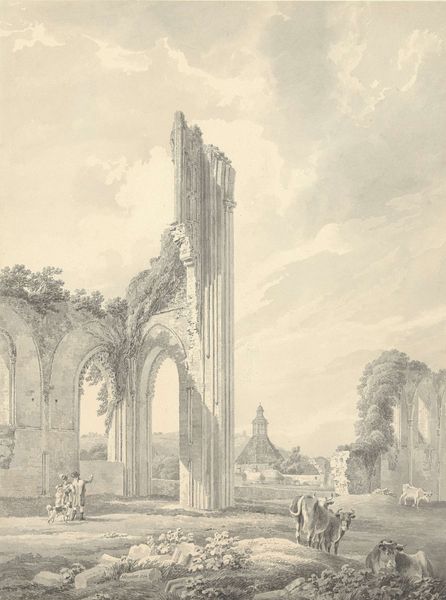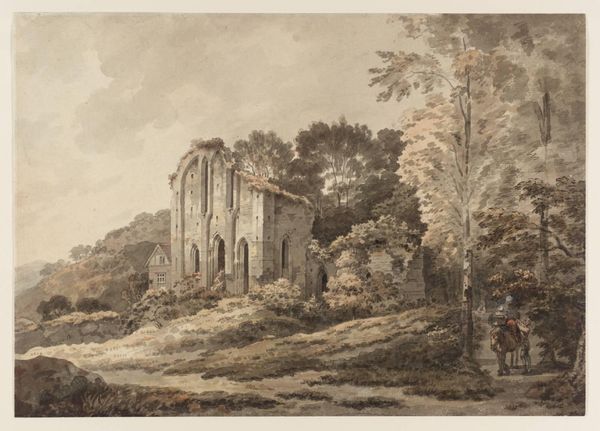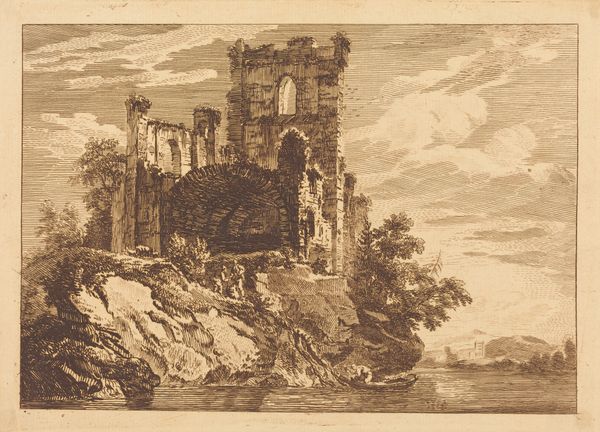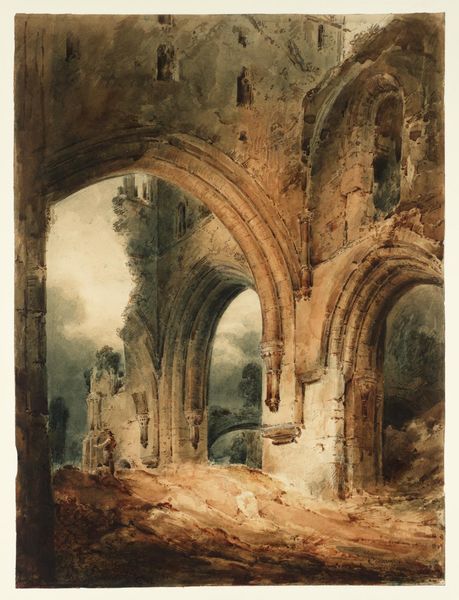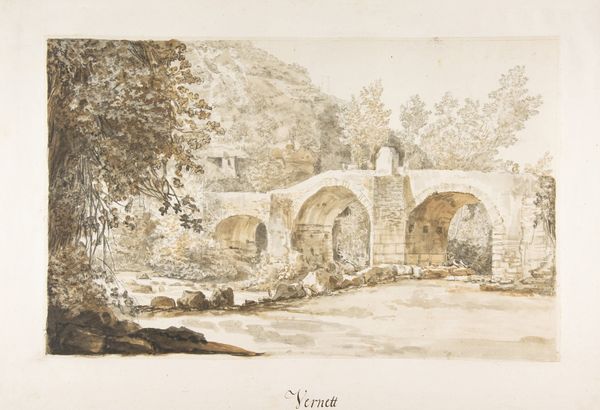
painting, watercolor
#
painting
#
landscape
#
oil painting
#
watercolor
#
romanticism
#
academic-art
Copyright: Public Domain: Artvee
Curator: This is "Landscape Looking Through Ruined Archway" by Thomas Sully, rendered in watercolor. What strikes you immediately about this piece? Editor: Crumbling grandeur. Seriously, I feel like I’m peeking through a forgotten cathedral. It’s like the bones of history are right there. Kinda romantic, right? Curator: Indeed. The romanticism movement embraced ruins as symbols of the past and as reminders of the fleeting nature of human achievement. Sully places these imposing, ruined arches as a kind of window onto a peaceful landscape. How does that juxtaposition resonate with you? Editor: Well, the quiet little scene beyond—are those cows? Maybe sheep?—creates a soft landing, you know? The wild overtakes, but nature always perseveres. Makes me think about resilience, both of nature and the spirits that may linger. Am I getting too deep? Curator: Not at all. Placing a renewed natural world just beyond this shattered building raises questions. We might ask who built it, who maintained it, who destroyed it, and for what purpose? By not foregrounding the historical narrative, Sully highlights a broader and more eternal perspective: life finds a way. Editor: Exactly! It’s funny how seeing something old and broken can lead to feeling so hopeful. This feels almost hopeful; despite the ruin. The watercolor gives it a translucent light quality, kind of dreamlike and faded. Curator: Watercolor’s delicate quality underscores the sense of fragility and temporality so central to the romantic sensibility. Now, thinking of the vantage point, Sully encourages a consideration of spatial relationships, of who is positioned inside versus outside the arches and perhaps what such borders delineate. Editor: So it makes you think of who's included or excluded, of different types of spaces? Yeah, the eye definitely wants to know what's 'out there', in the field. Almost like a yearning. It's subtle but impactful. This watercolor shows a profound engagement with social justice themes. The ruined structure signifies not just historical changes, but their very social and material consequences, and raises vital considerations about land ownership, social inclusion, and the impact of such decisions on lived experience. Curator: Precisely. What started as a romantic painting becomes charged. Any closing thoughts? Editor: That sometimes, even ruins can frame something beautiful and vital and that you have to be really, really careful when someone builds something that's meant to last forever. Curator: Indeed, time moves on, but through the eyes of Thomas Sully, we too can observe both the past and the future that is in motion.
Comments
No comments
Be the first to comment and join the conversation on the ultimate creative platform.
